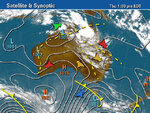micman
Member level 1
Hi,
I want amplify the signal on buffer(VCO) -5 dbm
I want find a transistor NPN with high dB gain. I'd like to find a NPN to gain > 20dB
Have you a name of transistor for small signal to recommend?
PS: Frequency operation is less 250Mhz
I want amplify the signal on buffer(VCO) -5 dbm
I want find a transistor NPN with high dB gain. I'd like to find a NPN to gain > 20dB
Have you a name of transistor for small signal to recommend?
PS: Frequency operation is less 250Mhz

